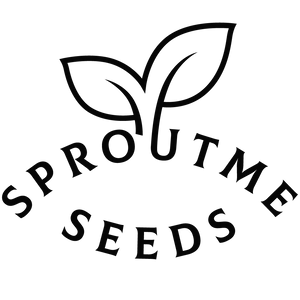Zone 7a
Zone Definition: Zone 7a is defined by the USDA Plant Hardiness Zones as regions with average annual minimum temperatures ranging from 0°F to 5°F (-17.8°C to -15°C). This zone includes parts of the southern United States, mid-Atlantic, and some areas of the interior West. The climate features mild winters and warm summers, providing an extended growing season for a variety of plants.
General Zone Characteristics: The climate in Zone 7a features mild winters and warm summers, making it suitable for a wide range of plants. Gardeners in this zone benefit from a long growing season, allowing for the cultivation of both cool-season and warm-season crops.
Climatic Features
Temperature Ranges: Average minimum temperatures in Zone 7a range from 0°F to 5°F. Summers are warm to hot, with average temperatures around 90°F (32.2°C).
Precipitation: Zone 7a experiences moderate annual precipitation, including occasional snowfall in winter and adequate rainfall during the growing season.
Seasons:
- Winter: Mild with occasional frosts and light snowfall.
- Spring: Cool and often wet, with late frosts possible.
- Summer: Warm to hot and relatively long, ideal for a wide variety of plants.
- Fall: Mild with gradual cooling, extending the growing season.
Soil and Its Characteristics
Soil Types: The soil in Zone 7a can vary widely but is often loamy and well-drained. Soil fertility is generally good, though some areas may require amendments to improve texture and nutrient content.
Fertilization and Improvements: Adding organic matter such as compost improves soil fertility and structure. Mulching can help retain moisture and control weeds.
Plants Suitable for Zone 7a
Trees and Shrubs:
- Evergreens: Hardy evergreens such as eastern red cedar, southern magnolia, and holly thrive in this climate.
- Deciduous Trees: Maple, oak, birch, dogwood, and cherry species grow well in Zone 7a.
Flowers and Ornamental Plants:
- Perennials: Hardy perennials like daylilies, hostas, coneflowers, black-eyed Susans, and irises are excellent choices.
- Annuals: Annuals like marigolds, petunias, zinnias, impatiens, and begonias provide vibrant color throughout the summer.
Vegetables and Fruits:
- Vegetables: Cool-season vegetables such as lettuce, spinach, broccoli, and root vegetables (carrots, beets) can be grown successfully, along with warm-season crops like tomatoes, peppers, beans, cucumbers, and squash.
- Fruits: Hardy fruit trees and bushes like apples, pears, cherries, peaches, plums, and blueberries are well-suited to the climate of Zone 7a.
Garden Care Through the Seasons
Spring Tasks:
- Planting: Start seeds indoors and transplant them outside after the last frost.
- Pruning: Remove any winter damage from trees and shrubs and shape them as needed.
Summer Tasks:
- Watering: Ensure consistent watering, especially during dry spells.
- Pest Control: Regularly monitor for pests and diseases, and address any issues promptly.
Fall Tasks:
- Harvesting: Collect vegetables and fruits before the first frost.
- Winter Preparation: Mulch plants, clean up garden debris, and wrap young trees to protect them from winter damage.
Winter Tasks:
- Protection: Use burlap wraps, mulch, and other methods to shield plants from occasional extreme cold.
- Planning: Plan the next year's garden layout and order seeds early.
Pest and Disease Management
Common Pests: Aphids, caterpillars, beetles, and slugs can be problematic during the growing season.
Plant Diseases: Fungal diseases can occur due to wet conditions during spring and early summer.
Organic Control Methods: Use neem oil, insecticidal soap, and other organic pesticides. Companion planting can also help deter pests naturally.
Watering and Irrigation
Watering Methods: Drip irrigation and soaker hoses are effective for providing consistent moisture without wasting water.
Irrigation Systems: Install irrigation systems early in the spring to ensure efficient watering throughout the growing season.
Landscaping Tips
Planning the Plot: Design your garden with windbreaks and shelter belts to protect plants from harsh winds and provide microclimates.
Using Native Plants: Native plants are best adapted to survive the conditions of Zone 7a. They require less maintenance and are more resilient.
Creating Rest Areas: Incorporate raised beds and container gardens to maximize the use of limited space and extend the growing season.
Expert Recommendations
Gardener Interviews: Local gardeners recommend focusing on hardy perennials and using mulch to protect plant roots from occasional extreme cold.
Useful Resources:
- Books: "The New Southern Living Garden Book" by The Editors of Southern Living Magazine.
- Websites: The University of Georgia Extension offers valuable gardening tips for Zone 7a.
Frequently Asked Questions
FAQ:
-
Q: What are the best vegetables to grow in Zone 7a?
- A: Cool-season vegetables like lettuce, spinach, and root vegetables are ideal, along with warm-season crops like tomatoes and peppers.
-
Q: How can I protect my plants from occasional frosts?
- A: Use mulch, burlap wraps, and cold frames to shield plants from frost.







